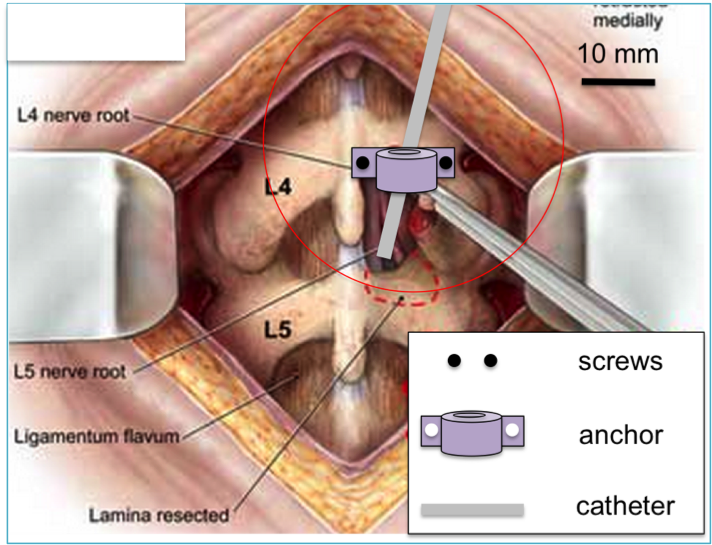


Lumbo-peritoneal Shunt Anchor
Spring 2014
Hydrocephalus patients suffer from excess cerebrospinal fluid. A solution to this problem is to insert a catheter into the spinal column that continuously drains the fluid into the peritoneal cavity of the abdomen. A common problem with these catheters is that day-to-day abdominal movement moves the catheter within the space-constrained spinal column. At best, these motions increase inflammation and chance of infection, and in the worst case pull the catheter out of the spinal column. The goal of the anchor is to isolate the section of the catheter in the spinal column from these abdominal forces.
The anchor was the final team project for the class 'Design of Medical Devices and Implants' at MIT where it won 'Best Device Design' out of all the devices that year.
My primary responsibilities were in the early device conception, final prototype design and generating the final CAD model including finalizing dimensions.